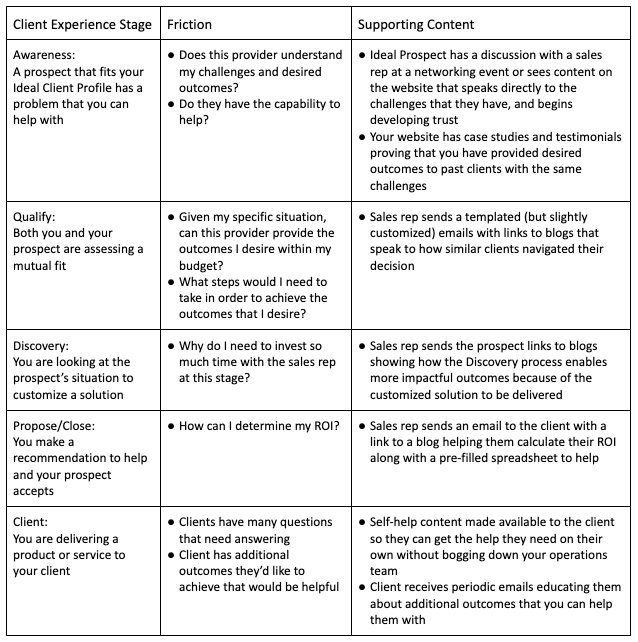
by Bill Poole | Jan 13, 2021 | Marketing
Content is at the heart of sales and marketing communication. As Darrell Amy says in his book Revenue Growth Engine, content is the fuel that feeds the sales and marketing processes that drive revenue growth. Implementing a content strategy ensures that your Revenue Growth Engine stays perpetually in motion.
Developing content to enable sales and marketing to ultimately drive revenue growth is not an exception to the old adage: Failing to plan is planning to fail. Having a content strategy ensures that your message will resonate with your audience.
If you don’t already have a content strategy in place, you may be asking: Why do I need a content strategy? The big idea with this blog is to answer that question.
Before we start, answer this question. How do you feel when you are contemplating buying something, or when you’re looking for support when you go onto a website and can’t find the answers you need?
Frustrated? Lack of trust? Want to go somewhere else to find the answers, or choose a different provider?
Here are just a few symptoms of not having an effective content strategy in place:
- The messaging on your website doesn’t clearly communicate outcomes to prospects that are ideal fits for your business
- The messages that your sales team communicates to prospects and clients is inconsistent from rep to rep
- All of your sales team spends time independently formulating messages in long emails instead of using content written for them to use by designated writers
- You struggle to know what to post on social media
- Prospects lack clarity as they navigate their experience with your business because they cannot find answers to common questions on your website (This may be going on and you don’t know it!)
- Your client-facing team members spend lots of time communicating with your clients about the same thing over and over.
Let’s take a step away from sales and marketing to look at operations. How does an operational team deliver quality customer service? More than likely, there are documented processes in place that are followed by operational team members. It would be pretty hard to deliver consistent, quality customer service without it, right?
Not having a content strategy for your sales and marketing processes is like not having procedures in place for your operations team. When you boil it down, there are two high-level benefits for implementing a content strategy:
- Effectiveness: Executing on a strategic content strategy ensures that the content initially connects and engages with prospects seeking your help and also streamlines their entire experience with your business.
- Efficiency: Simply stated, centrally creating content for your sales and marketing organizations to share is way more efficient than asking everyone to write their own content.
An effective content strategy has two different components:
- Overarching Company Message: Content that connects with prospects that are ideal fits for your business when they are determining whether or not they want to engage with your business
- Ideal Client Experience Content: Content that supports your prospects and clients throughout their entire experience with your business.
Overarching Company Message
It is very important to have a consistent message that engages with the prospects that are ideal fits for your business. We have written about it a lot! People don’t buy products or services, they buy outcomes.
At the heart of this high-level message is a story with your ideal client as the protagonist that:
- Has a challenge that is impacting their business
- Engages you to help them
- And ends with them achieving the outcomes that they need to move their business forward.
Your content strategy goes beyond merely creating this message. It also ensures that this story is known by all members of your organization and it permeates throughout your website and all collateral. This company message should be familiar to all team members and should be the rapid-fire answer to the question “what does your company do?”
While important, implementing the overarching company message is just the beginning.
Ideal Client Experience Content
The other component of your content strategy is a framework for the ongoing creation of impactful content that feeds your sales and marketing processes.
In the B2B space, the journey that prospects go through to achieve all the outcomes that you can deliver for them is likely longer than a trip to the grocery store.
During that journey, your prospects encounter friction. At Convergo, we use “friction” to describe the various questions, concerns, or lack of clarity that they might have along the way. Content is a great way to provide this needed clarity.
Mapping out this journey is a great place to start. Once the stages of the journey are mapped out, you have some context to think through potential friction. Then, you can write or produce content that provides clarity and alleviate concerns in order to minimize friction.
Let’s fast forward a bit and look at what it looks like if you have been executing a content strategy for a year or so within the context of a relatively basic client experience.
Content Strategy Based on the Client Experience

So there you have it! Your content strategy is in motion! Now:
- Your team members (and website) have a consistent story to tell prospects about the challenges that they have and outcomes that your can help them deliver
- Your sales team has a library of quality content to minimize friction without having to create (sometimes sub-par or on-the-fly) messaging of their own
- Prospects have increased clarity as they navigate their experience with your business, thus shortening sales cycles and improving client satisfaction
- You have content to post on social media that will resonate with your audience
- Your operations team has content that they can use to help clients instead of explaining things over and over again.
Is this what it looks like in your business? If not, what’s stopping you from implementing something like this?

by Bill Poole | Jan 11, 2021 | Marketing, Sales
The Convergo Approach Series
Part 1: The Difference Between Convergo and a Marketing Agency
Part 2: A Strategic Approach
Part 3: The Lens of the Ideal Client Experience
Part 4: Sales and Marketing Integration
Part 5: Sales and Marketing Processes
B2B companies often outsource marketing to an agency and have their sales team in-house. Of course there are advantages to outsourcing, but do you really think your sales and marketing departments should work for different companies?
Many entrepreneurial businesses have very tight processes when it comes to the operational side of the business. From a process standpoint when it comes to sales and marketing, it is The Wild West. Things like marketing “campaigns” and sales “blitzes” are short-term, flavor-of-the-month tactics, not sustainable processes.
At Convergo, we help our clients create and implement sustainable sales and marketing processes around the Ideal Client Experience to meet revenue growth goals. This is a significantly different approach from hiring an outside marketing agency to get “leads” for your in-house sales team.
A common link between Convergo and a marketing agency is content. Content is the fuel that drives all sales and marketing processes. Our Focused Message Framework provides a guideline for businesses to ensure that their content supports their ideal prospect from the time they realize they have a problem, to the time that they are a client enjoying everything that they can offer.
In closing, as you contemplate your direction with marketing services, what is it that you really want? Marketing or revenue growth?
If the answer is revenue growth, we’d like to talk!

by Bill Poole | Jan 8, 2021 | Marketing, Sales
The Convergo Approach Series
Part 1: The Difference Between Convergo and a Marketing Agency
Part 2: A Strategic Approach
Part 3: The Lens of the Ideal Client Experience
Part 4: Sales and Marketing Integration
Part 5: Sales and Marketing Processes
It is no secret that sales and marketing departments typically have an adversarial relationship. Sales wants marketing to provide better leads, and the marketing department thinks the sales team isn’t doing their job effectively because they don’t close the leads that they give them.
Lead Handoff
Traditionally, marketing agencies look at the “hand off.” The handoff is where the marketing qualified lead is passed along to the sales department for “qualification.” I use the word qualification loosely because many of these leads are not truly ideal clients that are appropriate for any sales engagement at all.
Taking a step back and thinking about things from the lens of the Ideal Client Experience enables us to remove the barriers that traditionally exist between sales and marketing. This might involve:
- Considering the client’s motivation at each stage of their experience and any friction that is keeping them from moving forward
- Determining what could be done to minimize that friction for the client and grease the skids to get to the next stage
- Deciding what role that sales and marketing have in greasing those skids to enable movement. Operations comes into the picture as well when you are looking at the product or service delivery stages of the client experience.
Let’s look at a practical example from our experience as to what this might look like. I am sure you have clients that are leveraging some of your products or services, but may not be taking advantage of everything that you could do for them.
Two primary reasons for the client not taking full advantage of all of your products and services that we typically see are:
- The client is not fully aware of the impact that you have on their business
- The client is not aware of the value of the full suite of products or services that you might be able to provide for them.
So what can be done? Conceptually, the client needs to be reminded from time to time of the impact of your products and services on their business as well as the additional outcomes that your company can provide for them.
How can sales, marketing, and operations align around this? Here’s an example solution with two complementary parts:
Implement a Periodic Business Review Process
This is a sales-led strategy where you can:
- Get calibrated on your client’s business
- Report back to the client on the success metrics that you are delivering for them. Operations can usually support this by providing metrics and insight on what is going on from a delivery perspective.
- Gather additional insight from them as to how your products and services are affecting their business. This will help you have future discussions with prospects and other clients.
Implement a Communications Plan
This is a marketing-led strategy that might leverage platforms like email and social to ensure your clients are aware of all of the possible outcomes that you could deliver to help them with their business.
This is just one example of sales and marketing (and operations) working together to improve the client experience instead of being at odds with each other about “leads.” Thinking about things from the clients perspective can align the thinking of the entire organization around improving the client experience to grow revenue.
Both sales and marketing have a role in taking the client through the experience with your organization. With sales and marketing working together to create a great and seamless experience at each stage, there will be more clarity on what makes a good lead and how to convert that lead to be a loyal and happy customer.

by Bill Poole | Dec 18, 2020 | Marketing, Sales
Originally published on Revenuegrowthengine.net.
For those who are obsessed with their products, the superiority of their business, or the beauty of their brand, this statement contains a hard pill to swallow. As great as your products are, as experienced as your team is, and as responsive your customer service may be, that’s not what buyers are buying. People do not buy your products, they buy the outcomes your products create.
Bob Moesta explores this principle in Demand-Side Sales 101. He shares the story of how he stopped trying to push his product on customers. Instead, he worked to understand the actual outcomes the customer desired. Then he engineered the buying process to satisfy the customer’s demand.

Buyers have a “job to be done”. That is why they buy a product. Period.
The “Jobs to be Done” theory (pioneered by Moesta and Clayton Christiansen one of my favorite authors) has been applied to design the world’s best-selling products. Successful product design begins with an obsessive examination of the outcomes that consumers want. Based on this, the product is reverse engineered to meet the demand.
The opposite of the “Jobs to be Done” theory is the “Product to be Sold” theory. Companies create products designed based on assumptions about what the prospect wants. Next, they fire up the manufacturing plant or the development team to build the product.
These ill formed products are presented to the sales team who then applies the “Quota to be Hit theory.” Sales reps assume they know what the prospect wants. Then, they proceed to put square pegs in round holes. It can work, but it creates a mess, a lot of hammering, and mediocre results.
Like Simon Sinek prophecies, we end up starting with “What?” and then try to answer the question, “How?” All of this ends up with frustration and often failure.
What if we actually started with “Why?” Why would the consumer care? Where are they feeling discomfort or frustration and why?
Moesta believes that for most companies there are only a handful (3-5) core “whys” that create demand. Once we intimately understand these drivers of demand, we can then craft our Ideal Client Experience and Focused Message around this demand.
Start with your Ideal Client. What outcomes do they want? This forms the foundation of demand. Build on this foundation and you’ll find success, even in an uncertain market. (Build on the foundation of how great your product and company are and you’ll discover that you have built your company on sand.)
How do you discover the outcomes your clients want? Ask and observe. Ask your Ideal Clients about their goals and challenges. Peel back the layers of the onion. Go deep. Seek understanding as to the real implications of the problem for their business and personal lives. (For more, read Value Is In the Eye of the Beholder.)
Then, watch. Pay attention to how the current situation frustrates them. What are their work-arounds? What’s holding them back.
From the client perspective, craft your Focused Message around the outcomes your Ideal Clients want. Propagate this message through all of your marketing and sales content. Then, design your Ideal Client Experience to match the actual demand in the market.
Just as manufacturers and software developers create successful products when they listen to their prospects, your marketing efforts will succeed as you pay attention to the actual demand, seeing to understand why your prospects buy and how they would like to buy.

by Lindsay Meade | Dec 17, 2020 | Marketing
A lot of our clients find us because they feel like they have some sort of gap in marketing that they’re hoping to get some help with. Whether they are looking to hire a marketing person, assess their existing marketing program, or for ongoing consulting services, everyone needs a plan they can execute on.
Do you have a gap in the marketing arm of your org chart? You may be asking about when you should hire a marketing coordinator, whether you should evaluate your team to see if someone has the skills to take on some of the marketing work you have, or whether you should outsource certain marketing activities to experts who specialize in it.
Are you frustrated with your current marketing agency for not providing you with enough leads? You may need to evaluate arrangement with them, realign around your company goals and focus your efforts around a new strategy. Maybe you are looking for leads, but your marketing agency is working on something else, like keyword rankings. Establish a common goal or metric to work toward.
Do you have the marketing agency and marketing people on your staff, but it feels disjointed?
You may need to take a step back and develop a cohesive plan to get all the pieces working in conjunction to move the needle.
While there may not be definitive answers to any of the above questions, the one thing that will help you find clarity and guide your decision making is a plan.
Why do you need a plan?
A plan is important for three specific reasons.
Getting your team on the same page
A plan is important for the alignment of your teams — both external and internal. Whether you are the sole marketer in your organization, you have a large team or you are working with external vendors, having a plan means that you know you are properly delegating, utilizing everyone’s skills appropriately and you aren’t doubling up on any work.
Knowing how to fill the gaps
When you know that you think you need to hire someone, it’s best to have a plan for what this person will be expected to do. It’s possible in the creation of an overarching plan that this role changes quite a bit from what you initially thought. Having a plan first means that you know where your true gaps are and have a general idea of what this person should be doing. You can then take this to a recruiter or team analyzer to determine the best way to fill the gap — hiring or reassigning someone.
Knowing what you’re working toward
In the creation of an overarching revenue growth plan, you’ll define specific company goals and highlight the areas to optimize to achieve those goals. Having this roadmap and being aligned around these goals gives everyone — not just your marketing team — a trajectory and common vision to work toward. This is crucial before making any decisions, whether hiring, reassigning anyone or outsourcing work.
Before answering the question of whether you should hire a marketing person, it’s important to have a plan to guide your decision making.

by Lindsay Meade | Nov 13, 2020 | Marketing
Our clients often ask how they can create or write content that their buyers actually want to read. In truth, you can spend a lot of time reading articles on how to craft the perfect headline, how to structure your content or how to write so that busy people can get the gist without being completely focused. I won’t be diving into any of that in this blog because I think there is something even more important than anything I just mentioned, and that is around the subject matter itself.
How can you write content that your buyers want to read? How can you make people read your content?
It’s simple. Write content that addresses questions they already have.
When we meet with our clients to consult and help them launch a content creation process, we start by thinking about the outcomes our prospects and clients hope to achieve and what the common questions that these people are asking. We’ve written about the outcomes before, so let’s focus on the common questions.

The best rule of writing content that people will actually read is to place yourself in their shoes.
Think about what they are experiencing.
What led them to browse the web? Make a search on Google? What led them to your social channels? To your blog? To your company?
Chances are that they had a question around a specific topic, they wanted that question answered, and they went out and found someone who had the answer.
These buyers know they have a problem or some unanswered question and they need an expert to solve it for them or answer it. If this is something that you can help this person with, wouldn’t it be nice if they arrived at your website and not your competitors website? Once your blog is filled with answers to a lot of typical questions that your ideal client has, your visitors will find an engaging experience on your website that will be more likely to generate trust faster.
To be found in search engines for specific questions your buyers have, you need to produce great content that answers that question.
Knowing that you need to write content around your buyers’, prospects’ and clients’ questions, you may be asking yourself how to get started.
How do you know what people are asking?
Spending some time brainstorming as a team — with sales, marketing, and operations working together, you’ll realize that there are a lot of questions that are frequently asked. Maybe your sales reps are being asked the same questions when they initially engage with a new prospect. Or maybe your account managers are getting the same comments in their quarterly reviews. Or maybe your marketing team is finding a common thread in the testimonials and reviews they get.
This is a great starting point for gathering questions. Compile a long list, see what overlap there is and where you should prioritize your efforts! Once you organize these questions, you can determine the best format for delivering the content — from social media copy to emails for sales sequences and from blog content to the slide deck for your QBRs.
Good luck in your writing!








